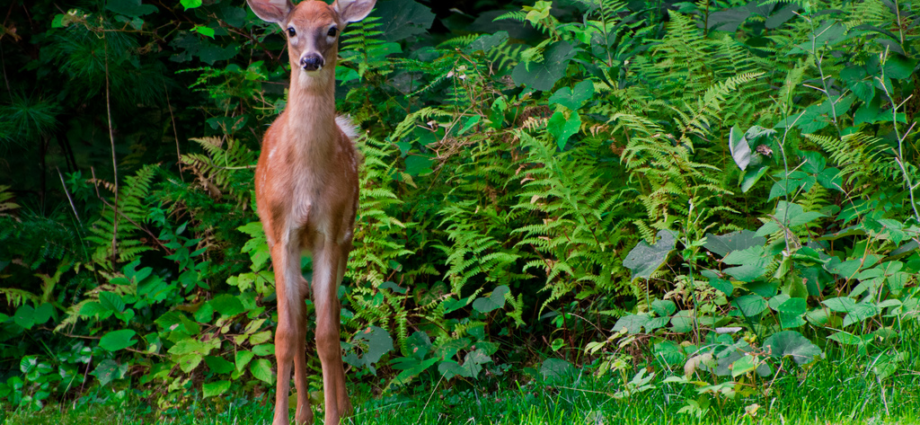The Problem: Deer and their Feeding Habits
In the past century, the nationwide population of white-tailed deer (Odocoileus virginianus) has skyrocketed from half a million to 15 million. With this enormous rise, it is not surprising that homeowners are experiencing an increase in the amount of devastation in their gardens. Not only has there been a tremendous increase in population but development of suburban and rural areas has reduced their natural territories and deer are being forced into suburbia for their supper.
The amount of deer damage in your garden depends on several factors: size of the local population, size of its territory, other available food sources and time of year. Deer tend to eat annuals and herbaceous perennials in the spring and summer and woody plants (trees and shrubs) in the winter.
Deer are creatures of habit; they have preferred pathways that they ritually follow as they roam through their territory. Their past foraging experience will influence which areas get hit hardest. While understanding their habitual ways may cause some of us to rejoice in our battle against deer, the celebration is often short-lived. What a deer eats depends in large part on its nutritional needs, past experiences and available food sources. What one deer may ignore, another may devour.
Listed below are tips to help you combat the problem in your garden. Experiment with a number of them to see what works.
The Solution: Different strategies for protecting your garden
There are three primary lines of defense:
Fences
Fences are a primary method of defense against deer. For effectiveness, they should be 8 to 10 feet tall. Many opt for lightweight, black plastic fences, which can blend in when camouflaged at the garden’s edge. If deer access your property through the driveway, consider installing a deer fence gate or cattle guard. Alternatively, a slanted fence set at a 45-degree angle, 4 feet wide and 6 feet tall, can be effective. A double fence, consisting of two 4-foot-tall fences spaced 4 feet apart, is also a viable option. Electrical fences are gaining popularity, especially in deer-prone areas. If a full property fence isn’t feasible, consider using plastic netting or wire cages for individual plants. Additionally, smaller sections of the garden can be fenced off as needed. Several companies specialize in deer fencing, and their products can be found online.
The Warnell School of Forestry at the University of Georgia conducted trials on the three-strand Gallagher® fence, which proved effective even in areas with dense deer populations. This fence, installed in two layers with only three electrified strands, maintains a low profile in the yard. More information on this study can be found through the Warnell link on their website.
Repellents
Repellents can be categorized into two types: taste-based and odor-based. Odor-based repellents, often featuring disagreeable scents like sewage, putrid eggs, or garlic, tend to be more effective in deterring deer damage. Alternatively, for more aromatic plants, consider using repellents infused with essential oils such as peppermint or rosemary. Repellents are most effective when applied to specific areas or sprayed on individual plants. They typically last three to five weeks and should be applied when the temperature ranges between 40 and 80 degrees Fahrenheit, ensuring dry weather conditions for at least 48 hours post-application. To prevent deer from becoming accustomed to the scent, alternate between different repellents.
In addition to commercial options, some home remedies can also prove effective. For instance, tying a strongly scented soap like Irish Spring (still in its wrapper) to a rope and hanging it from a tree or staking it 30 inches above ground can deter deer. Use one bar every ten feet for optimal coverage. Another option is collecting human hair from a hair salon and placing it in a mesh bag or old pair of pantyhose, positioned similarly to the soap. However, it’s worth noting that deer are becoming increasingly adept at identifying and sometimes even consuming these home remedies.
Landscaping with Deer-Resistant Plants
Landscaping with deer-resistant plants is a popular option for gardeners looking to combat deer damage. While some plants are completely ignored by deer, others are less preferred. However, it’s important to note that if deer are hungry enough, they may still consume these plants. Deer often have regional preferences, so it’s essential to reference lists compiled specifically for your region. Nonetheless, lists of deer-resistant plants provide a valuable starting point and offer a diverse array of intriguing options for home gardeners. You can find our guide to deer-resistant plants here.

